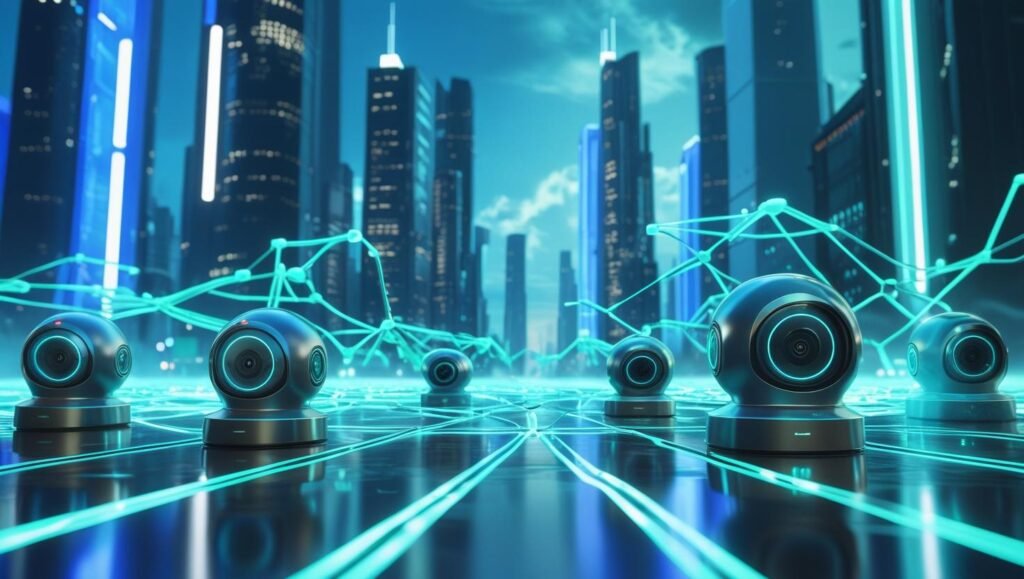Fog Computing: Master Edge Data Processing Now

Imagine a world where your smart devices work faster, use less power, and handle tons of data without a hitch. That’s where fog computing comes in! It’s a game-changer for the Internet of Things (IoT), making devices like smart cameras, sensors, and even self-driving cars smarter and more efficient. In this blog post, we’ll break down what fog computing is, why it matters for IoT, and how you can use it to solve real-world problems. Let’s dive in and make sense of this exciting technology!
What Is Fog Computing?
Fog computing is a way to process data closer to where it’s created, like your smart thermostat or a factory sensor. Instead of sending all data to a faraway cloud server, fog computing uses nearby devices or “fog nodes” to do the heavy lifting. This cuts down on delays and saves bandwidth.
Think of it like cooking dinner at home instead of ordering takeout from across town. It’s faster, cheaper, and you have more control. Fog computing is perfect for IoT because it handles data quickly and keeps things running smoothly, even with millions of devices.
How Does Fog Computing Work?
Fog computing sits between your IoT devices and the cloud. Here’s a simple breakdown:
- IoT Devices: These are things like smart watches, security cameras, or temperature sensors that collect data.
- Fog Nodes: These are local devices, like routers or small servers, that process data close to the source.
- Cloud: The cloud stores data for long-term use but only gets involved when needed.
By processing data locally, fog computing reduces the time it takes for devices to respond. For example, a self-driving car can make split-second decisions without waiting for a distant server.
Why Fog Computing Matters for IoT
IoT is growing fast. Billions of devices are connected, from smart homes to factories. But sending all their data to the cloud causes problems like slow responses, high costs, and network overload. Fog computing solves these issues in a big way.
Faster Data Processing
When a smart device sends data to the cloud, it can take seconds or longer to get a response. That’s too slow for things like medical devices or traffic systems. Fog computing processes data locally, so responses are almost instant. For instance, a smart traffic light can adjust signals in real-time to ease congestion.
Saves Bandwidth and Costs
Sending tons of data to the cloud uses a lot of internet bandwidth. This can get expensive and clog networks. Fog computing handles most data locally, sending only what’s needed to the cloud. This saves money and keeps networks running smoothly.
Better Security for IoT Devices
IoT devices are often targets for hackers. Fog computing adds a layer of security by keeping sensitive data closer to the device. For example, a smart home camera can process video locally instead of sending it to the cloud, reducing the risk of data leaks.
Challenges of Fog Computing in IoT
While fog computing is awesome, it’s not perfect. Let’s look at some challenges and how to tackle them.
Managing Lots of Devices
In large IoT systems, you might have thousands of fog nodes. Keeping them all working together is tricky. To solve this, companies use smart software to manage and update fog nodes automatically. This keeps everything organized and efficient.
Security Risks
Fog nodes are closer to devices, but they can still be hacked. To stay safe, use strong encryption and regular updates for fog nodes. It’s like locking your doors and windows to keep intruders out.
Compatibility Issues
Not all IoT devices and fog nodes speak the same “language.” This can cause problems when they try to work together. Using standard protocols, like MQTT or CoAP, helps devices and nodes communicate smoothly.

How to Master Fog Computing for IoT
Ready to use fog computing in your IoT projects? Here are five practical steps to get started:
- Choose the Right Fog Nodes: Pick devices like routers or mini-servers with enough power to handle your data. For example, a Raspberry Pi can work as a fog node for a small smart home system.
- Use Efficient Protocols: Protocols like MQTT or LoRaWAN are great for fog computing. They’re lightweight and perfect for low-power devices.
- Focus on Security: Always encrypt data and use secure connections. Regularly update your fog nodes to protect against new threats.
- Test Your Setup: Start small with a few devices and fog nodes. Test how they handle data to make sure everything works smoothly.
- Monitor and Optimize: Use tools to track how your fog nodes perform. Adjust settings to improve speed and efficiency as needed.
A Quick Comparison: Fog vs. Cloud Computing
To understand fog computing better, let’s compare it to cloud computing:
| Feature | Fog Computing | Cloud Computing |
|---|---|---|
| Data Processing | Close to devices (low latency) | Faraway servers (higher latency) |
| Bandwidth Usage | Low, processes locally | High, sends all data to cloud |
| Cost | Lower for large-scale IoT | Higher due to bandwidth |
| Security | Localized, less data exposure | More data sent over the internet |
| Scalability | Great for many devices | Can struggle with massive IoT |
This table shows why fog computing is a better fit for IoT systems that need speed and efficiency.
Real-World Uses of Fog Computing
Fog computing is already changing how IoT works in many industries. Here are a few examples:
Smart Cities
In smart cities, fog computing helps manage traffic, lights, and even waste collection. For example, fog nodes can analyze traffic data locally to adjust signals and reduce jams, making cities smoother and safer.
Healthcare
Hospitals use fog computing to monitor patients in real-time. A wearable device can send heart rate data to a nearby fog node, which alerts doctors instantly if something’s wrong. This saves lives by acting fast.
Manufacturing
Factories use fog computing for “smart manufacturing.” Sensors on machines send data to fog nodes, which predict when equipment might fail. This cuts downtime and saves money.
Tips to Stay Ahead with Fog Computing
Want to make the most of fog computing? Here are some quick tips:
- Stay Updated: Technology changes fast. Keep learning about new fog computing tools and protocols.
- Start Small: Test fog computing with a small project before scaling up to bigger systems.
- Collaborate: Work with experts in IoT and fog computing to share ideas and solve problems.
- Prioritize Energy Efficiency: Choose low-power fog nodes to save energy, especially for battery-powered IoT devices.
Conclusion
Fog computing is a powerful way to make IoT systems faster, cheaper, and more secure. By processing data close to devices, it solves many challenges of large-scale IoT deployments. Whether you’re building a smart home, a factory, or even a smart city, fog computing can help you succeed. Start small, focus on security, and keep learning to master this exciting technology. You’ve got this!
FAQs
What’s the difference between fog and edge computing?
Fog computing and edge computing both process data close to devices, but fog uses a network of nodes, while edge computing often happens on the device itself. Fog is more flexible for large systems.
Is fog computing secure for IoT?
Yes, fog computing can be secure if you use encryption and regular updates. It reduces data sent to the cloud, which lowers the risk of leaks.
Can fog computing work without the cloud?
Yes, fog computing can handle most data locally, but it often works best with the cloud for long-term storage or complex tasks.
Read more: Real-Time Data: How IoT Boosts Smart City Efficiency Now




